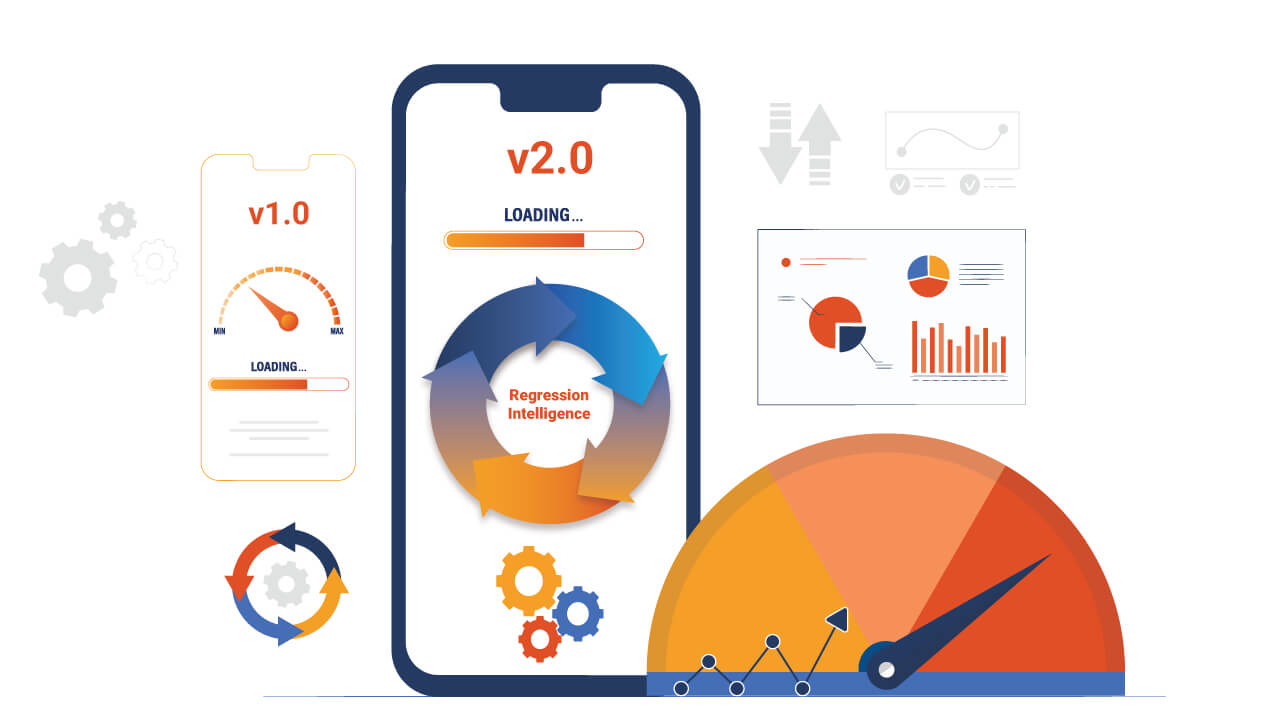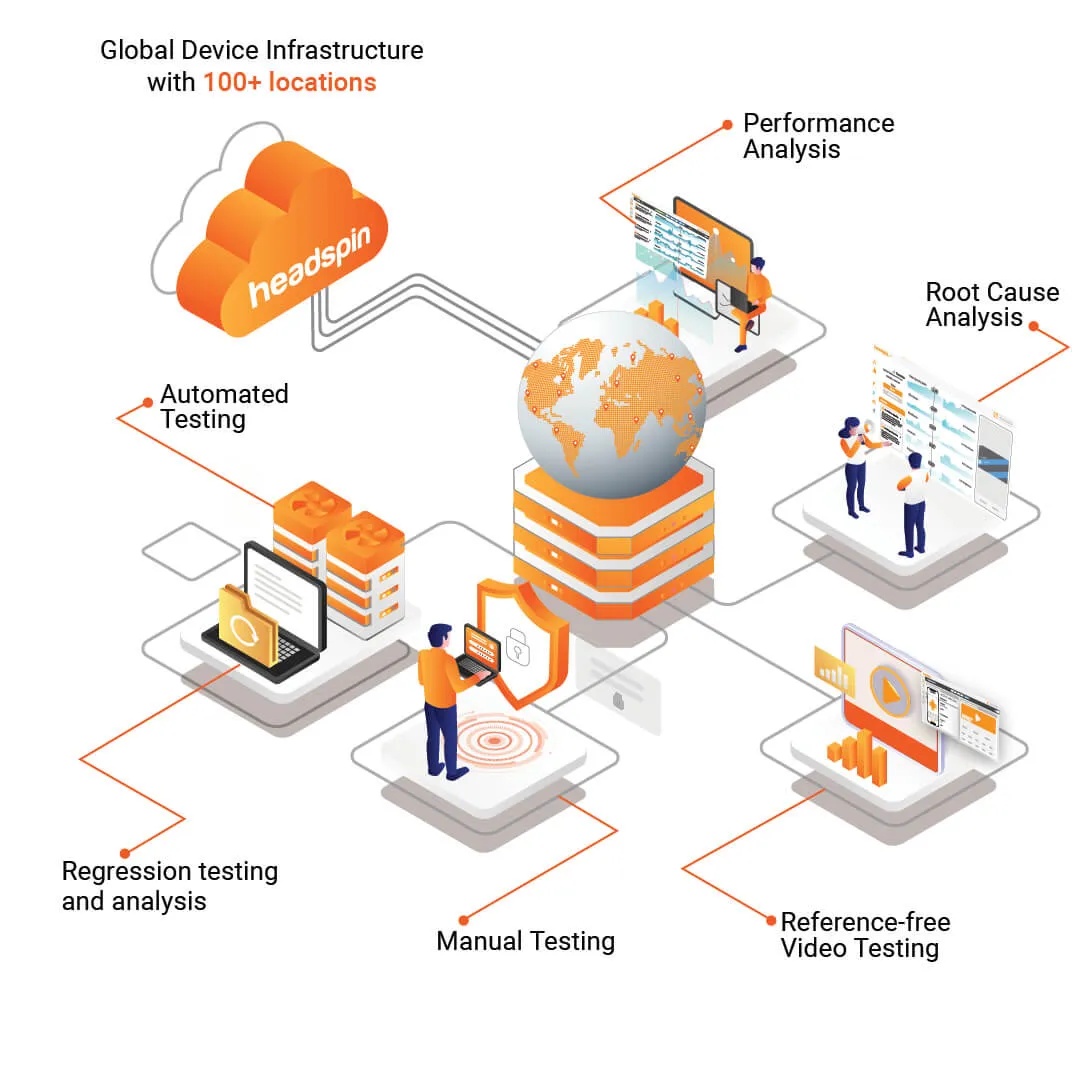Introduction
Enterprises have traditionally relied on local device labs to test mobile and web applications. While these setups once met basic testing needs, the growing diversity of devices, global user bases, and frequent operating system updates have made them costly and difficult to maintain.
To address these challenges, many organizations are now shifting to cloud-based testing platforms, which offer access to real devices across multiple locations, are scalable, and require lower or no operational overhead.
Let us take a detailed look at this in this article:
Why In-House Testing Labs Are Becoming a Burden
High Setup and Maintenance Costs
Building and maintaining an in-house device lab involves significant ongoing expenses. Enterprises must purchase devices running on multiple operating systems and screen sizes, along with racks, cabling, power backup, cooling, and physical space.
Each new OS version adds to the effort, requiring updates on every device and re-running compatibility tests. On top of this, infrastructure components such as SIMs, racks, and power systems require regular maintenance and replacement.
Even after setting up the hardware, teams still need to build and maintain custom software layers for test execution and reporting, often to achieve only basic QA outcomes.
Over time, these combined costs grow rapidly and consume a large share of IT budgets and engineering time.
Limited Device Coverage
Users run apps on hundreds of devices with different screen sizes, hardware configurations, and operating systems. In-house labs struggle to keep up with the extensive device diversity due to the setup required for each device.
Additionally, every app release or OS change necessitates repeated testing across dozens of device-OS combinations. Since it's nearly impossible to cover all variations in a local device lab, many devices remain untested, leading to blind spots that cause UI glitches, crashes, and poor performance.
Gaps in Network Testing
Local labs also struggle to create real network conditions that users often face globally. Teams must manually manage SIM cards, switch carriers, and configure various scenarios, including 2G, 3G, 4G, 5G, and Wi-Fi, with varying signal strengths, handovers, and roaming.
Despite this effort, users still experience regional network behaviors, congestion patterns, and real-time signal fluctuations. These blind spots can lead to slow performance, failed transactions, and a poor user experience.
Lack of Collaboration Across Teams
Local device labs often operate in silos, storing test results, logs, and performance data locally, which makes it difficult for teams to share insights or align on issues in real time.
Without centralized dashboards or unified reporting, developers and testers rely on manual updates and disconnected tools to track progress. This fragmentation slows down root-cause analysis and increases miscommunication between the teams.
Key Benefits Enterprises Gain From Cloud Testing
Cloud testing has gained traction because it removes the barriers that hinder locally set-up labs. Enterprises get access to real devices without managing hardware, along with the flexibility to scale and integrate into modern delivery pipelines.
Flexible Cost Model
Unlike local device labs, cloud-based testing platforms eliminate the need for significant upfront investments in devices and infrastructure. Teams pay only for what they use through plans that can be adjusted according to their specific needs, such as device count, testing hours, and other usage metrics. Costs remain predictable, with all maintenance handled by the provider. This allows teams to focus their budgets and time on improving test coverage and product quality instead of managing hardware.
Access to a Wide Range of Real Devices
Cloud-based testing platforms host a broad selection of real devices across brands, models, and operating systems. These devices are hosted across multiple locations, accurately reflecting diverse user environments. Teams can instantly access and test devices their users actually use, eliminating the need for extensive in-house inventories. This range helps identify UI, compatibility, and performance issues early in the release cycle.
Comprehensive Network Coverage
Cloud-based testing platforms let teams test how applications behave under real network conditions—not just in controlled lab setups. With real SIM-enabled devices connected to multiple carriers, QAs can test across 2G, 3G, 4G, 5G, and Wi-Fi networks and switch between them instantly. They can measure latency, packet loss, and throughput to understand how network shifts or weak signals affect performance. This approach provides teams with an authentic view of user experience across regions, eliminating the limitations of local labs and manual setup.
Centralized Access and Shared Test Data
Cloud-based testing platforms store all test results and logs in a shared environment accessible to QA, development, and product teams. Teams can immediately see test outcomes, rerun failed scenarios on the same devices, and compare results across locations. This makes reproducing issues faster, reduces miscommunication, and keeps everyone aligned on app quality.
Moving QA to the Cloud With HeadSpin CloudTest Go
HeadSpin CloudTest Go offers enterprises a practical way to move beyond the limitations of local device labs. It delivers real-device testing in the cloud that is straightforward to adopt and cost-effective to scale.
- Affordable access. Enterprises avoid upfront investments in devices, racks, and physical infrastructure.
- Manual and automation support. QA teams can run exploratory tests, while DevOps pipelines integrate automated scripts.
- Framework ready. Works with Appium, Selenium, and other widely used automation frameworks.
- Flexible plans. Subscriptions are available by the hour, month, or year, giving teams freedom to align costs with usage.
- Optional add-ons. Performance, media, and advanced insights expand testing coverage as needed.
- Fast onboarding. Testing begins immediately without the delays of lab setup or procurement cycles.
For organizations that require private deployments and advanced customization, HeadSpin provides CloudTest Pro. CloudTest Go is best suited for teams that need affordable, flexible real-device testing with a quick path to value.
Wrapping Up
Enterprises that adopt cloud testing today are setting the foundation for long-term agility in QA. The model facilitates the faster adoption of new frameworks, smoother integration with evolving CI/CD pipelines, and readiness for future technologies, such as 5G and edge computing. Making this shift is less about replacing infrastructure and more about preparing QA teams to meet the demands of tomorrow’s applications and user expectations.
Start testing with HeadSpin’s CloudTest Go today and give your team a direct path to scalable, real-device coverage.
FAQs
Q1. Why are enterprises moving away from local labs?
Ans: Local labs require high upfront investment, constant maintenance, and are slow to scale. They also cannot replicate global devices and networks effectively, which creates gaps in testing coverage.
Q2. What makes cloud testing more efficient?
Ans: Cloud testing provides instant access to real devices worldwide, supports parallel test runs, integrates with CI/CD pipelines, and eliminates the overhead of managing hardware.
Q3. How does HeadSpin CloudTest Go differ from CloudTest Pro?
Ans: CloudTest Go is designed for flexible, cost-effective access to real devices in the cloud. It is easy to adopt and works well for most teams. CloudTest Pro is suited for enterprises that need private deployments and deeper customization.
Q4. Can CloudTest Go support both manual and automated testing?
Ans: Yes. QA teams can perform exploratory manual tests on devices, and DevOps teams can run automated test scripts through frameworks such as Appium and Selenium.



























.png)



















-1280X720-Final-2.jpg)






